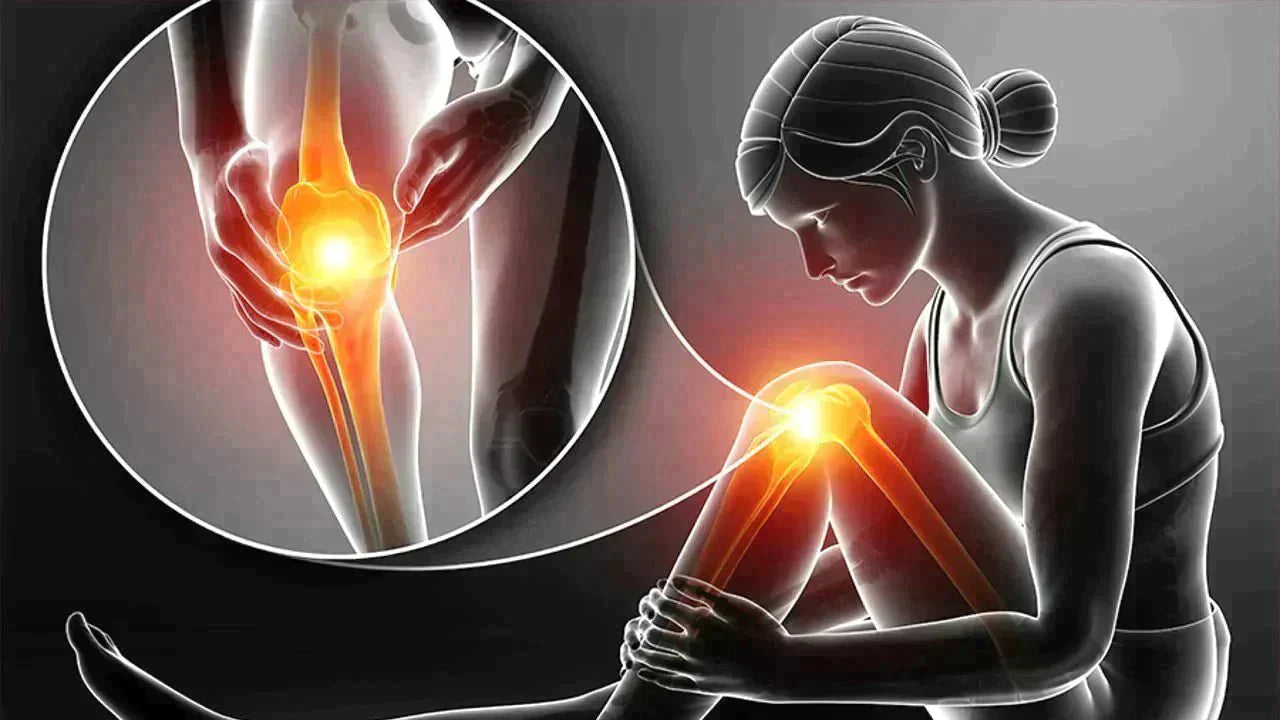Do you suffer from joint pain? If so, then you don’t have to rely solely on over-the-counter medicines or prescription drugs; unlocking the power of turmeric may help you find relief. In this article, we will explore the natural approach to treating joint pain by looking at the scientific evidence linking turmeric to joint health and how to safely incorporate it into your everyday life and turmeric side effects.
After reading this article, you'll have a greater understanding of how to alleviate your joint pain in an effective and safe way and perhaps try a turmeric curcumin complex.
What is Turmeric?
History of Turmeric
Composition of Turmeric
Anti-inflammatory Properties
Antioxidant Properties
What Forms of Turmeric are Available?
As a Spice
Turmeric is a centuries-old spice renowned for its medicinal properties. Derived from the root of the ginger plant, it is often used as a flavor enhancer and coloring agent in food. It contains curcumin, a natural anti-inflammatory compound, among other bioactive compounds.
Studies suggest turmeric may reduce pain and inflammation associated with arthritis and other conditions, improve immune system function, and protect against chronic diseases. This versatile spice can be ground or taken whole to add flavor and color to dishes, brewed into tea, or consumed as a supplement - all offering potential relief from joint pain while providing additional health benefits.
As a Tea
Turmeric can also be enjoyed as a tea, offering many health advantages. The root of the turmeric plant is dried and ground into powder, which is then boiled in water and strained for a spicy and flavorful beverage. Ginger, black pepper, honey - these are just some of the ingredients often added to enhance both flavor and nutrition.
For centuries now, turmeric tea has been used to reduce inflammation, strengthen immunity and benefit heart health. It contains antioxidants plus bioactive compounds that may help ease joint pain and swelling. Regularly drinking this tea can help decrease inflammation while improving joint wellbeing.
As a Supplement
Turmeric can be a convenient way to get the joint pain relief benefits, as it is often taken in supplement form. These supplements are usually standardized with curcumin, the active ingredient of turmeric, and sometimes combined with black pepper extract for better absorption into the bloodstream. Studies have suggested that taking turmeric supplements can reduce inflammation related to arthritis and other conditions, as well as potentially protect against certain types of cancer - though more research is needed. When considering taking turmeric supplements, safety should be considered alongside other treatments for joint pain; speaking to your doctor before taking any supplement is also important due to potential interactions with medications which could cause serious side effects. Taking a quality supplement from a reliable source will help ensure you're getting enough curcumin for effectiveness and avoiding adverse reactions. No matter what form of turmeric you choose, it can be an advantageous addition to your joint pain relief plan.
Is Turmeric Safe to Use for Joint Pain?
When it comes to joint pain relief, turmeric is a popular choice. But how safe is it? Generally speaking, turmeric has been deemed a secure and natural remedy for joint pain. A systematic review of studies on the efficacy of turmeric in treating rheumatoid arthritis found curcumin (the active ingredient in turmeric) to be effective at reducing both discomfort and inflammation. Furthermore, taking blood thinners with turmeric was proven safe despite some worries that plant-based supplements like it could increase bleeding risk. Additionally, combining other arthritis medications with this supplement is also considered safe.
Pregnant women, those with gallbladder disease or about to have surgery should avoid taking these supplements though. It's important to consult a doctor before using them as they may interact with other drugs you're taking too. The recommended dose can vary depending on the type of supplement, so consulting an expert is key for ensuring correct dosage intake.
In conclusion, while there are certain precautions one must take when using this treatment option for joint pain - if done correctly under medical supervision - turmeric appears to be a reliable and potentially beneficial solution for relieving such aches naturally!
Other Treatments for Joint Pain
In addition to turmeric, there are other options for joint pain relief. Acetaminophen and ibuprofen are popular over-the-counter medications used to ease discomfort. Glucosamine and chondroitin supplements, hot/cold treatments may also be beneficial. For more severe cases of joint pain, doctors may suggest a nonsteroidal anti-inflammatory drug (NSAID) such as naproxen or ibuprofen to reduce inflammation and pain. Corticosteroid injections can help with extreme cases of joint pain while physical therapy and bracing can assist those with knee osteoarthritis in reducing their suffering. Surgery is sometimes recommended, but should only be discussed with a doctor first. Before trying any treatment, it's important to speak to a physician about safety and effectiveness for you personally. Additionally, maintaining a healthy weight, exercising regularly, avoiding activities that cause distress - all these lifestyle changes can help alleviate joint pain too!
Summary
This article has explored the potential of traditional turmeric as a natural approach to joint pain relief. We have discussed the powerful properties offered by this ancient spice, from its yellow pigment curcumin, which has anti-inflammatory benefits that could help reduce swelling and joint pain, to its strong antioxidant content for improved overall joint health. As well as covering the various forms available, including tea and supplements, we’ve also looked into some of the other treatments available.
It’s clear that turmeric can provide a range of health benefits, however it is essential to understand the correct dosage when taking this spice as a supplement or capsule. Consulting with a doctor and considering any potential interactions with other medications is also important to ensure safe use and optimal relief.
Although there are various options available for joint pain relief, especially based on consultation with a physician, the natural properties of turmeric may offer an effective means to reduce inflammation and improve overall joint health, without the need for over-the-counter medicines.
Frequently Asked Questions
How much turmeric should I take for joint pain?
For joint pain relief, it's recommended to take between 400 and 600 mg of turmeric three times a day. Consider taking a turmeric capsule, tablet, or extract for the best results and to avoid contaminants.
Maximize your wellbeing with this beneficial supplement.
Does turmeric work for joint pain?
Studies suggest that taking turmeric supplements may help relieve joint pain, especially for those with osteoarthritis. Some studies show that taking 500mg of curcumin daily can produce statistically significant reductions in joint pain and improved physical function.
Therefore, turmeric appears to be an effective way to address joint pain.
How long does it take for turmeric to start working for joint pain?
Generally, it may take around 4 to 8 weeks for one to start noticing improvements in their joint pain after beginning a turmeric supplement regime.
However, individual results can vary greatly and some people find relief much sooner.
What is the best way to take turmeric for joint pain?
For the best relief from joint pain, it is important to take turmeric supplements at the recommended dosage and follow all directions specified on the label.
Additionally, combining turmeric with black pepper can increase the effects and effectiveness, as well as adding turmeric to foods for a nutritious and tasty boost.
How much turmeric should I take daily for arthritis?
For treating arthritis, it is recommended to take 400-600 mg of turmeric capsules or 0.5-3 grams of turmeric powder daily by dividing the dosage in three separate doses.
This dosage should be divided into three separate doses throughout the day. This will ensure that the body is receiving the full benefits of the turmeric.










